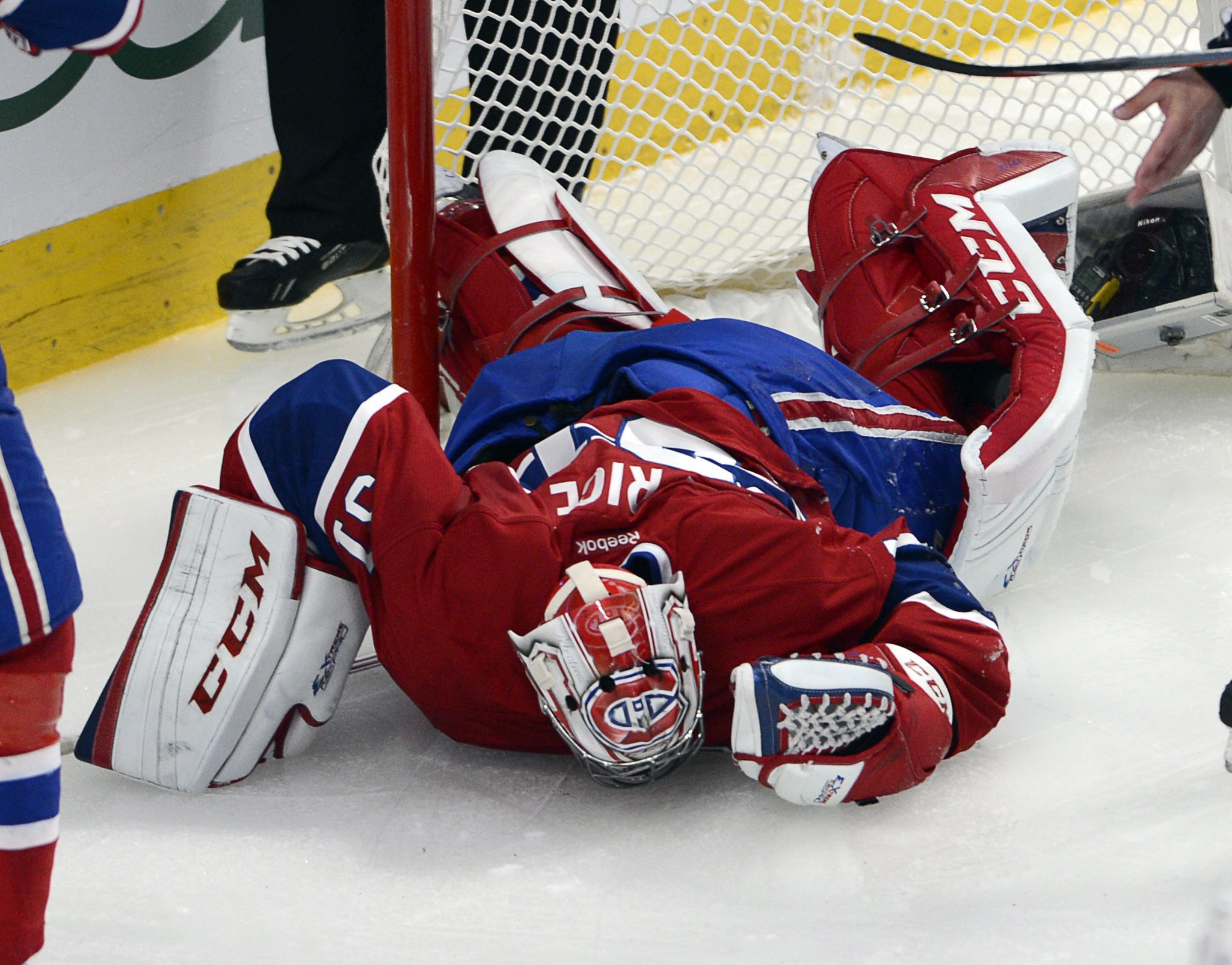
In this photo taken May 17, 2014, Montreal Canadiens goalie Carey Price (31) lies on the ice after being run into by New York Rangers' Chris Kreider during the second period in Game 1 of the NHL hockey Eastern Conference final Stanley Cup playoff series in Montreal. Price's status for Game 2 of the Eastern Conference final is still unclear. Price briefly tested his right knee Sunday before the Canadiens' optional practice. Coach Michel Therrien said the team will know more Monday before they host the New York Rangers trailing 1-0 in the series. (AP Photo/The Canadian Press, Ryan Remiorz)
Carey Price’s knee injury is more serious than expected, according to the Canadiens.
The Montreal Canadiens still have goaltender Carey Price on the roster, technically speaking.
He has once again been placed on the long-term injured reserve, but there’s little to no chance he will return to action due to the severity of his knee injury.

Former team physician, Dr. David Mulder, revealed the Canadiens netminder was dealing with more than just a tear in his meniscus.
Mulder spoke at a Gala which took place at the Bell Centre and took the opportunity to elaborate on Price’s injury. You can find the French version of his comments by clicking here, via TVA Sports.
“It was frustrating for us, and doubly frustrating for him,” said Dr. Mulder. “We realized he had two injuries.”
The second injury was found as Price was in New York to repair an injured meniscus.
“We sent him to New York for an operation on his meniscus. That’s when the surgeon noticed that Price’s femur had lost all his cartilage. That’s what ended his career. It was a surprise for everyone.”
Playing With Serious Injuries
As a reminder, the lack of cartilage on his femur was discovered after Price’s fantastic run in the 2021-22 playoffs, in which he dragged the Canadiens to the Stanley Cup Final.
It puts his performance during that run, as well as entire his career, in a new perspective. He was dealing with a significant injury throughout but still managed to play and excel.
It also goes to show his Bill Masterton Memorial Trophy Win in 2022 was well-deserved, and you’d have to be incredibly pretentious to think otherwise.
Dr. Mulder’s report aligns with the surgery Price described to the media in 2022.
OATS stands for ‘osteochondral autograft transfer system‘, a cartilage transfer procedure that takes healthy cartilage from one area and places it into his weight-bearing knee.
“The surgery is called OATS,” said Price, who is yet to agree to the procedure. “They’re taking a plug of cartilage and bone from a lower area in your knee and placing it in the cartilage-damaged area.”
Price also suggested there’s a 50 percent chance the surgery would not be successful, which only adds to the severity of the whole situation. Not only was he dealing with a painful issue, but the recovery from said issue was far from guaranteed.





